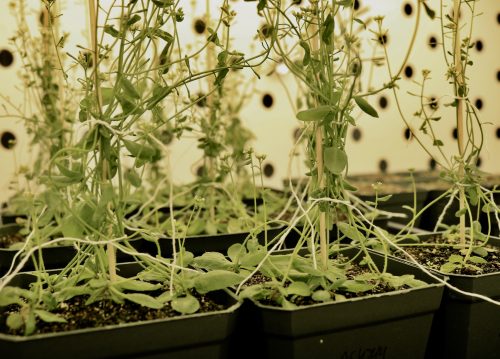Have you ever taken time to enjoy the beauty of flowers? Professor Vivian Irish and Postdoctoral Associate Adam Saffer of Yale’s Molecular, Cellular and Developmental Biology Department have done so for years, especially from a scientific perspective. They study what affects a flower’s shape and appearance. Recently, they discovered a molecule that affects the twist of flowers, which refers to the way flowers turn. In their paper published in August, they revealed that in a specific type of flower, Arabidopsis thaliana, a substance called pectin influences the twisting of plant cells. A common substance in the kitchen, pectin gives jam its gelatinous quality.
Saffer first looked at a mutation that caused plant cells to be short and twisted. The researchers then identified a mutated gene underlying the helical shape of these cells. This gene plays a role in the biosynthesis of a certain kind of pectin called RG-I. The researchers believe that RG-I may normally counteract a component of cell walls that causes cells to twist. However, in the mutated cells, the levels of RG-I are reduced, enabling the unknown component to make cells twist.
The Irish Lab is working to better understand the role of pectin in providing cell structure, and Irish is partnering with researchers at Yale’s Department of Mechanical Engineering and Materials Science to develop models to explain this left-handed twisting. By identifying a novel characteristic of pectin, Irish and Saffer have opened doors for the development of new biomaterials. While they are excited for these applications, at the end of the day, both still like to enjoy the aesthetically pleasing nature of flowers.

